Minnesotans Don’t Want California Car Mandates, Even If the Natural Resources Defense Council Does
On April 16, 2020 the Natural Resources Defense Council (NRDC) wrote an article entitled “Minnesotans Want Clean Cars: The Oil Industry, Not So Much.” The article, which mentions Center of the American Experiment by name, was meant to be a defense of Governor Walz’s attempt to force Minnesotans to obey California car mandates for low emissions vehicles and zero emissions vehicles.
However, the NRDC article made several easily-refutable claims that merit correcting, and these claims will be discussed below. In reality, American Experiment’s polling has found that California’s car regulations are deeply unpopular in Minnesota because the vast majority of Minnesotans are unwilling to pay more for a car or subsidize an electric car for others.
Walz’s California Car Mandates Are Delayed Due to COVID-19, For Now
The article starts off by applauding the Walz administration for temporarily delaying their attempt to impose California car mandates on Minnesota due to COVID-19, while attempting to portray the Trump administration as opportunistic or capitalizing on the virus to publish the final version of their new Safer Affordable Fuel-Efficient Vehicle rule (SAFE).
“As Minnesotans continue to stay-at-home to flatten the COVID curve, the state government is working hard to support healthcare providers, assist workers and businesses, and to keep the public safe and healthy in these unprecedented times. In the face of the pandemic, state officials delayed publication of draft Clean Cars standard temporarily to ensure the public has adequate time to review and give input. But now the oil industry wants this delay to continue indefinitely – forever, if possible. We cannot let that happen; there are plenty of economic, health and climate reasons to make these protective standards a reality.
This is in stark contrast to actions by the Trump administration which, in the middle of a global public health pandemic, rolled back clean car and fuel economy standards that were protecting public health and helping cut fuel bills.”
It is important to understand that these two situations are fundamentally different.
The Walz administration has decided not to start a new rulemaking process during the COVID-19 outbreak, which deserves our applause, while the Trump is finishing a rulemaking process it started in 2018.
The Walz administration did the right thing by delaying their California car rulemaking because under the current circumstances, the general public may not have been able to fully express their opinion on the subject. In contrast, the public has had years to weigh in on the SAFE rule. This means rather than rushing the rule, the Trump administration has given interested parties ample time to weigh in.
Air Quality, COVID-19, and Public Health
NRDC claims that California car mandates will reduce emissions and improve public health, even going so far as to claim they would help reduce death rates for COVID-19.
“[S]tudies are showing that more polluted air is contributing to higher COVID-19 death rates, as my colleague and environmental health scientist explains. As a Harvard study found, these “results underscore the importance of continuing to enforce existing air pollution regulations to protect human health both during and after the COVID-19 crisis.”
“Pollution from vehicles as well as extracting, refining, and transporting gasoline is incredibly harmful to respiratory health. Low-income communities and communities of color – often located close to freeways – bear a disproportionate brunt of that damage.”
First, a few things related to COVID-19, and then a few relating to air quality in general.
If higher levels of air pollution are associated with higher COVID-19 mortality, then we would expect to see much higher death rates in China than we see in the U.S. This is because the air quality in the U.S. is much better than it is in China, as you can see in the map below which shows the concentrations of small particles (PM2.5) on a global scale. As you can see, most of the United States is characterized by having concentrations of PM2.5 at the lowest level, whereas China is a characterized by having much higher levels of air pollution.
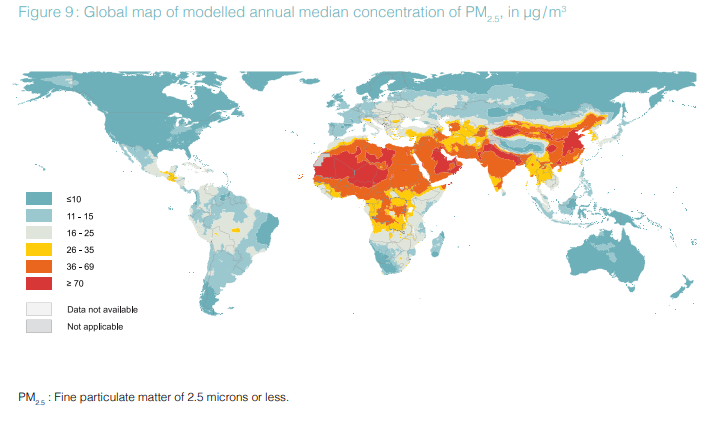
If you believe the Chinese government’s numbers of COVID-19 mortality, which claim only 3,869 people have died of the virus (as of April 17, 2020), then it becomes very difficult to argue that there is a strong connection between air quality and COVID-19 mortality. If there were, we’d see a lot more deaths in heavily-polluted China than in the United States.
Secondly, the proposed California car mandates likely wouldn’t help for the COVID-19 outbreak because Minnesota’s air already meets all state and federal air quality standards. These standards are established to protect even vulnerable populations like children and the elderly, as you can see in the graph below that was created by the Minnesota Pollution Control Agency (MPCA).

For context, the air in Minneapolis is much cleaner than in Wuhan, China, according to an interactive chart assembled by the New York Times.
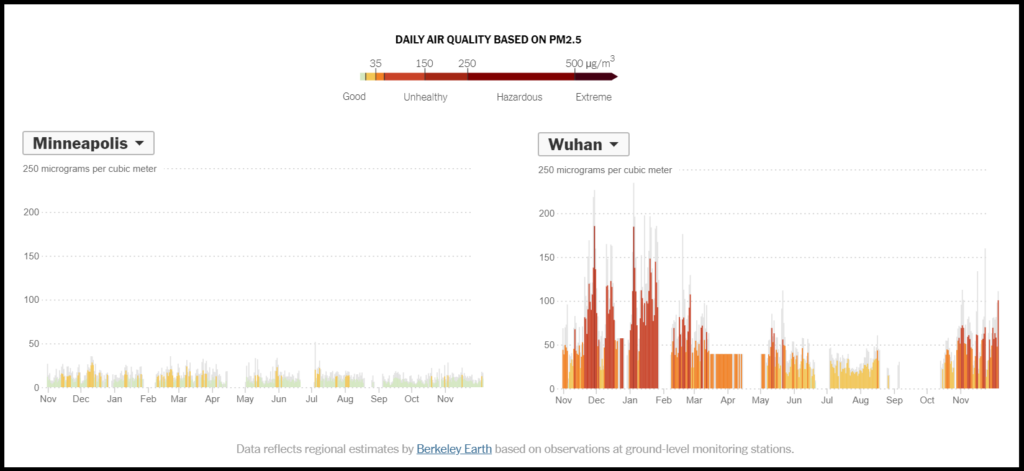
It is also important to note that cars are not even the largest contributor to pollutants like PM2.5, nitrogen dioxide, or sulfur dioxide, in Minnesota. In fact, backyard fires and neighborhood sources account for a larger share of these emissions, so if we wanted to reduce more emissions at lower cost, it would make more sense to regulate “non-essential” air emissions like backyard fires before imposing expensive regulations on Minnesota automobiles.

Impact on Low-Income Households
It is interesting that the NRDC is trying to use low-income communities as a reason to promote California car mandates, because in reality, these communities will be harmed the most by the rising cost of cars. In fact, the California Air Resources Board (CARB) which is the government agency that publishes these rules, is currently being sued by a group of civil rights leaders who allege that the agency has implemented climate change policies that have led to the resegregation of the Golden State, with Latino and African American communities being hardest hit.
This makes sense. If cars become more expensive, it becomes harder for low income families to afford a newer car. Since older cars emit more pollution than newer cars, the people living in these areas will essentially have fewer opportunities to gradually improve their air quality by driving increasingly-cleaner cars. In contrast, the areas that will benefit first from this rule are areas where people are affluent enough to pay an extra $2,500 per vehicle or purchase an electric car.
While many low-income neighborhoods are located near major highways, they would benefit most by allowing the greatest number of people to afford newer, cleaner cars. The Walz Administration’s rule makes that more difficult and concentrates the environmental benefits in areas that are relatively richer.
Not About Consumer Choice
Advocates for these regulations argue that forcing dealerships to carry electric vehicles will increase consumer choice, but as I’ve written about before, survey data from CleanTechnica.com, which is a website dedicated to promoting renewables and electric vehicles, shows there is virtually no demand for the models that are not currently offered in Minnesota, and that these talking points are wrong.
The first thing to know about the market for electric vehicles is that is utterly dominated by Tesla, and no one else is even close. The graph below shows EV purchases by model for the year 2019. The Tesla Model 3 accounted for 63 percent of sales, all by itself, and as a whole, Tesla accounted for 78 percent of 2019 EV sales. The Chevy Bolt, the most popular non-Tesla EV, was only 6.7 percent of the EV market last year.
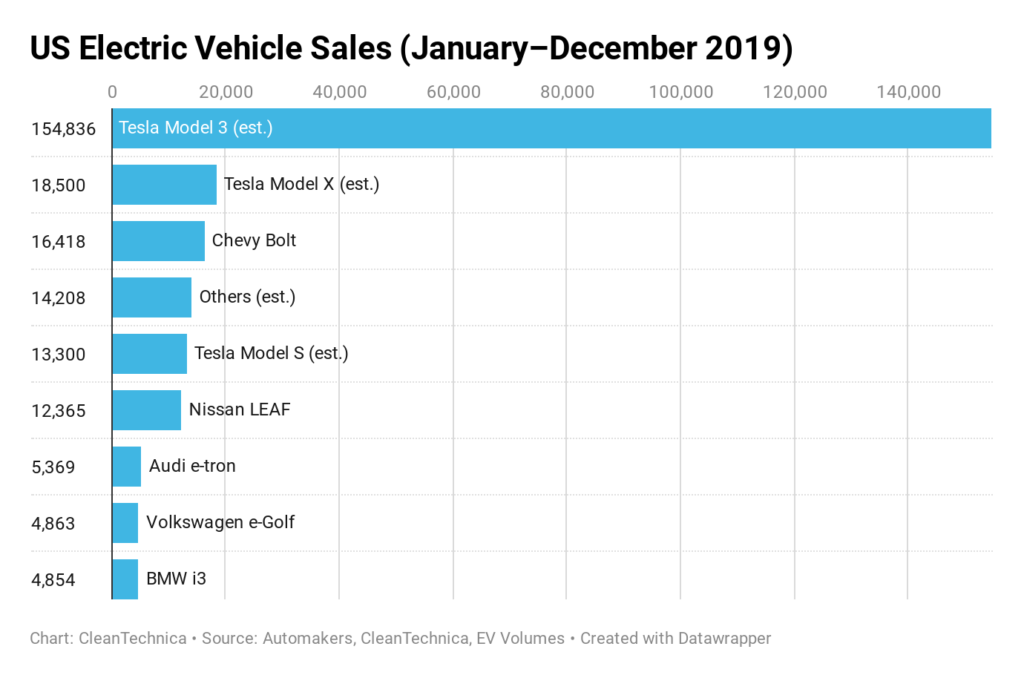
For reference, each and every one of the models featured in the chart above can be purchased in Minnesota by either going to the Tesla website, or a casual glance at Cars.com. The only models that aren’t available in Minnesota are cars that virtually no one wants.
Of the electric cars survey respondents were asked about, the only models not offered in Minnesota were the Kia Nero and the Kia Soul EV at 5 percent and 2 percent, respectively. This effectively means that proponents of the rules are arguing we need to adopt California’s mandates for the sake of the handful of people who may want KIA electric vehicles that currently don’t rank as top sellers in the EV market.
The Cost of California’s Deeply Unpopular Mandates
The NRDC article attempts to claim that there is broad support for these measures, but a close look at the poll numbers they cite actually show people are unwilling to pay the cost associated with the proposed California car mandates.
NRDC wrote:
“By a two-to-one margin, Americans support allowing states to set stronger tailpipe standards than the federal government, according to a December poll by the Washington Post.”
However, the exact same poll the NRDC author cites also found that a majority of Americans (51 percent) were unwilling to even pay $2 per month in a tax on their electric bill to reduce greenhouse gas emissions, 64 percent were unwilling to support a 10 cent increase in the federal gas tax, 71 percent of Americans opposed a $10 tax on electric bills, and a whopping 74 percent opposed a 25 cent gas tax increase.
These costs are much smaller than the increase in the cost of cars that Minnesota families would incur if the Walz administration imposes California mandates on Minnesota.
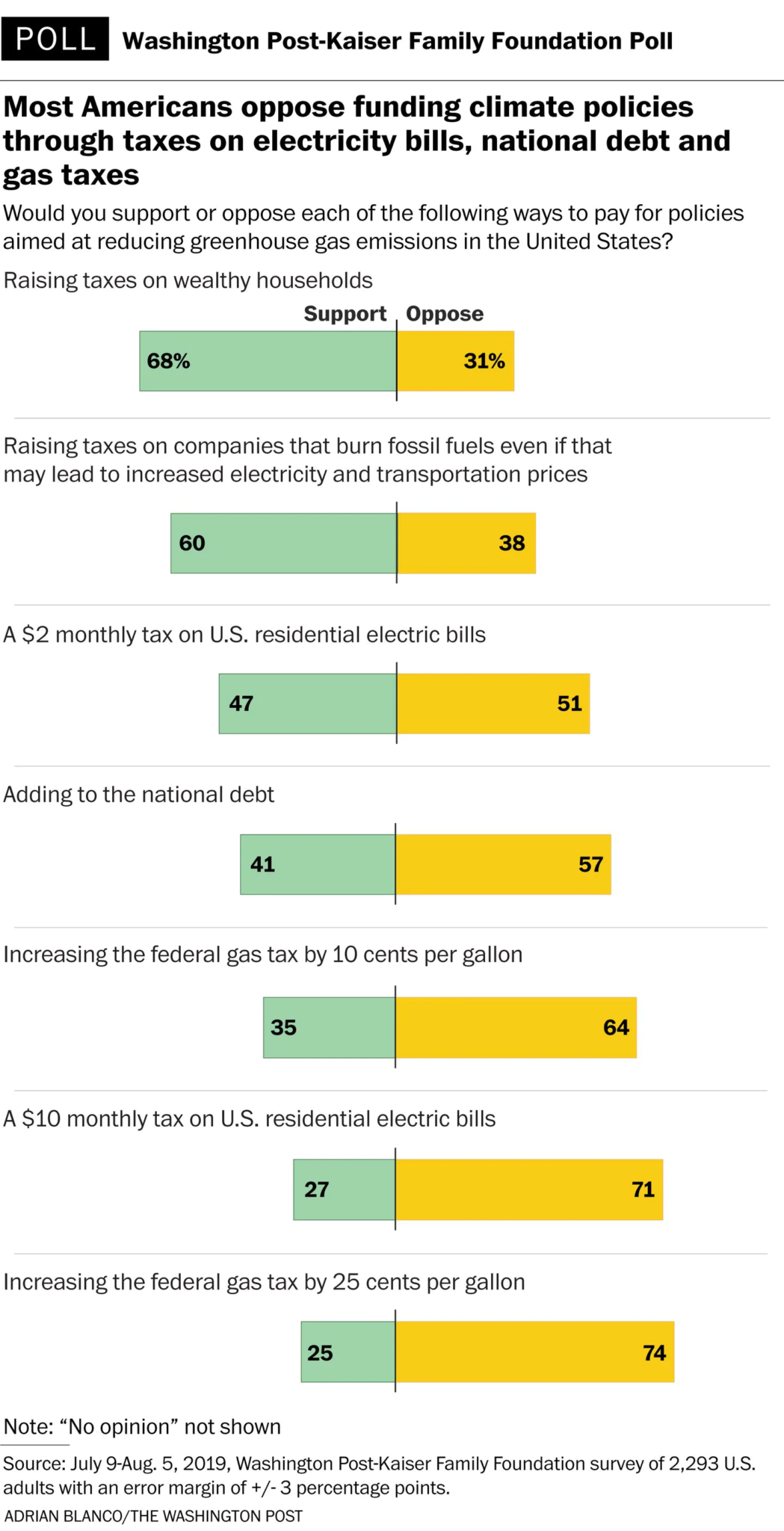
The Minnesota Pollution Control Agency states the rules will increase the cost of cars by $800, but according to an analysis by the Colorado Auto Dealers Association (Colorado is the most recent state to fully adopt these regulations) these regulations would increase the cost of gasoline powered vehicles by $2,000 to $2,800 through model year 2025.
Minnesotans are overwhelmingly unwilling to pay these additional costs, according to polling conducted by American Experiment. As you can see, 79 percent of Minnesotans were unwilling to pay an extra $2,800 to comply with proposed California car regulations.
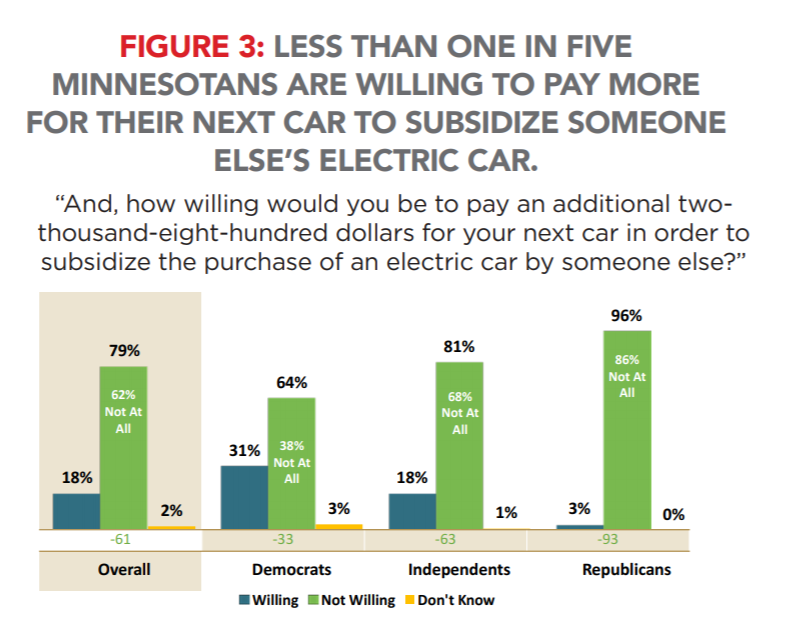
The CADA also said that it would take 11 years for these regulations to pay for themselves through lower lifetime fuel costs, which is problematic because the average car in Minnesota is only 11.4 years old. You can read more about how these mandates will increase costs in American Experiment’s 27-page comments that we submitted to the Minnesota Pollution Control Agency.
Conclusion
The NRDC made several claims that were easily debunked. Minnesota’s air quality already meets strict federal standards, the regulations do not help low-income communities, or increase consumer choice. Lastly, while Americans may claim they support the ability of states to set stricter gas mileage standards than the federal government, Minnesotans are overwhelmingly unwilling to pay the extra costs associated with these mandates.
We don’t mind when groups like the NRDC attack us (especially when the attacks are so flimsy) because it proves that American Experiment is moving the needle and having a real impact on energy and environmental issues. We’re taking flak because we’re over the target.